Marvel Rivals Pro Player Settings: The Ultimate Guide for Peak Performance
Updated On: November 12, 2025 by Aaron Connolly
Essential Pro Player Settings
Pro players actually tweak Marvel Rivals settings way beyond what you get out of the box. They chase every bit of performance and any edge they can find.
You’ll usually see pros obsess over sensitivity, graphics optimisation, and hardware setups. They keep testing, adjusting, and arguing about what works best.
Recommended Core Options
Mouse sensitivity is where it all starts. Most pros use much lower sensitivity than you might expect. For instance, TenZ uses 0.48 sensitivity with 1600 DPI (that’s a 768 eDPI), while Cloakzy prefers 1.3 sensitivity with 800 DPI (1040 eDPI).
The sweet spot for Marvel Rivals seems to fall between 800-2400 eDPI. Lower sensitivity gives you steadier aim for long shots and tracking. Higher sensitivity makes those fast turns and close-up fights easier.
Graphics settings always lean toward raw performance, not eye candy. Pros usually go with:
- Low texture quality for better frame rates
- Shadows off so enemies stand out
- Effects quality low or off to cut down on distractions
- High refresh rate monitors (240Hz is the norm)
Most stick with 1920×1080 resolution—even if their screens can do more. It keeps frame rates high and targets a bit bigger.
Differences Between Pro and Default Settings
Default settings in Marvel Rivals just look nice, but they’re not made for competition. Sensitivity defaults to around 50% and mouse acceleration is on. Pros turn off acceleration immediately since it messes with their aim.
Graphics defaults use medium to high settings. Sure, it’s pretty, but you’ll lose frames. Field of view defaults to 90, but pros crank it up to 103 for better awareness.
Audio settings are another story. Pros max out master volume and tweak individual channels. They mute the music, so they can hear footsteps and ability sounds.
Crosshair customisation gets a lot of attention from pros. They set up unique crosshairs for each hero, not just the basic one.
How to Apply Settings Efficiently
Start with mouse sensitivity. Copy a pro who plays like you, don’t just average out a bunch of settings. Stick with your new sensitivity for at least a week before changing it again.
Import graphics settings by grabbing screenshots from pro streams or tournaments. Go step by step:
- Set your resolution and refresh rate.
- Drop all graphics options to minimum.
- Bump up only what you really need.
Test every change in the practice range, not in ranked. Marvel Rivals lets you save different profiles, so set up a few for different situations.
Upgrade hardware in this order: mouse first, then monitor, then keyboard. Pros can win with cheap keyboards, but they all use good mice with reliable sensors.
Honestly, just copy a full pro setup at first. Mixing and matching can break things, and it’s easier to start with something proven.
Display and Graphics Optimisation
Nailing your display and graphics settings can be the difference between buttery-smooth gameplay and constant frustration. Focus on native resolution, picking the right display mode, and tweaking brightness so you can spot sneaky enemies.
Best Resolution and Aspect Ratio
Always go with your monitor’s native resolution and aspect ratio. You’ll get the sharpest image and lowest input lag that way.
Most competitive players stick with 1920×1080 at 16:9. It’s reliable and runs well on almost any PC.
If you’re really struggling for FPS, sure, drop the resolution for a bit. But honestly, it’s better to upgrade your hardware than play with a blurry screen.
Quick tip: Double-check your monitor’s manual or display settings before you launch Marvel Rivals.
| Resolution | Aspect Ratio | Best For |
|---|---|---|
| 1920×1080 | 16:9 | Most competitive setups |
| 2560×1440 | 16:9 | High-end gaming rigs |
| 3840×2160 | 16:9 | Top-tier systems only |
Display Mode Selection
Set Marvel Rivals to fullscreen mode for the best performance. Windowed and borderless modes just add extra overhead and cost you frames.
Fullscreen lets your GPU take control. That means less input lag and fewer interruptions from Windows.
Some players like borderless windowed for quick alt-tabbing, but if you’re aiming for the top, fullscreen is the way to go.
Just a heads-up: Fullscreen can make switching apps a pain, so get your setup sorted before you dive into ranked.
Brightness and Visual Clarity
Crank up brightness to 70-80% so you can actually see enemies hiding in dark spots. Marvel Rivals has plenty of shadowy corners.
Keep gamma at default unless your monitor is unusually dim. If you mess with gamma too much, colours get washed out and it’s harder to spot heroes.
Bumping contrast up by 10-15% helps enemies stand out from the background. It just makes things pop a bit more.
Most pros turn off screen space reflections. They look cool, but honestly, they just hide important stuff in the heat of a fight.
Try out your brightness settings on different maps. What works outside might be too dark inside, so don’t be afraid to adjust.
Frame Rate and Performance Settings
Keeping your frame rate high and watching your performance metrics is just as important as aiming. These settings help you keep things smooth and spot network issues before they ruin your match.
Limit FPS
Capping your FPS stops your graphics card from running hotter than it needs to. That keeps frame times steady and your PC quieter.
Set your FPS cap to match your monitor’s refresh rate. Got a 144Hz monitor? Cap at 144 FPS. Pushing higher just eats resources and can make things less stable.
Here’s what works best:
| Monitor Refresh Rate | Recommended FPS Cap |
|---|---|
| 60Hz | 60 FPS |
| 120Hz | 120 FPS |
| 144Hz | 144 FPS |
| 240Hz | 240 FPS |
Use the in-game FPS limiter. External software can add input lag, but the in-game option works directly with the engine.
Some players like capping 1-2 frames below their refresh rate. It’s a little trick that helps prevent stutters during big fights.
Show FPS and Performance Metrics
Keeping an eye on your FPS helps you catch drops before they mess with your aim. Marvel Rivals has built-in performance displays, so use them.
Turn on the FPS counter to track your frame rate. Watch for dips during team fights or when heroes use big abilities. A steady 144 FPS always feels better than bouncing around between 200 and 90.
Show GPU and CPU usage if you can. If your GPU sits below 95%, your CPU might be the issue.
Frame time graphs matter too. Spikes make the game feel choppy, even if your average FPS looks fine. A steady 120 FPS beats a jumpy 144 FPS any day.
Test settings in real matches. Practice range is fine, but only real games show if your tweaks actually help.
Network Stats and Lag Reduction
Network issues ruin matches, plain and simple. Marvel Rivals gives you network stats so you can keep tabs on your connection.
Turn on ping display and packet loss indicators. If your ping goes over 50ms, you’ll start to feel it. Anything over 1% packet loss causes stutters and missed shots.
Check server stats if possible. Sometimes the problem isn’t you, it’s the server. Knowing when to take a break can save you a lot of frustration.
Use network optimisation features. NVIDIA’s Low Latency Mode or AMD’s Anti-Lag 2 can shave 5-15ms off your input lag.
Close anything using bandwidth before you play. Streaming, downloads, or backups can spike your ping at the worst times. Just pause them while you’re in ranked.
Go wired if you can. Ethernet beats Wi-Fi every time for stable ping and fewer micro-stutters.
Graphics Detail Tweaks
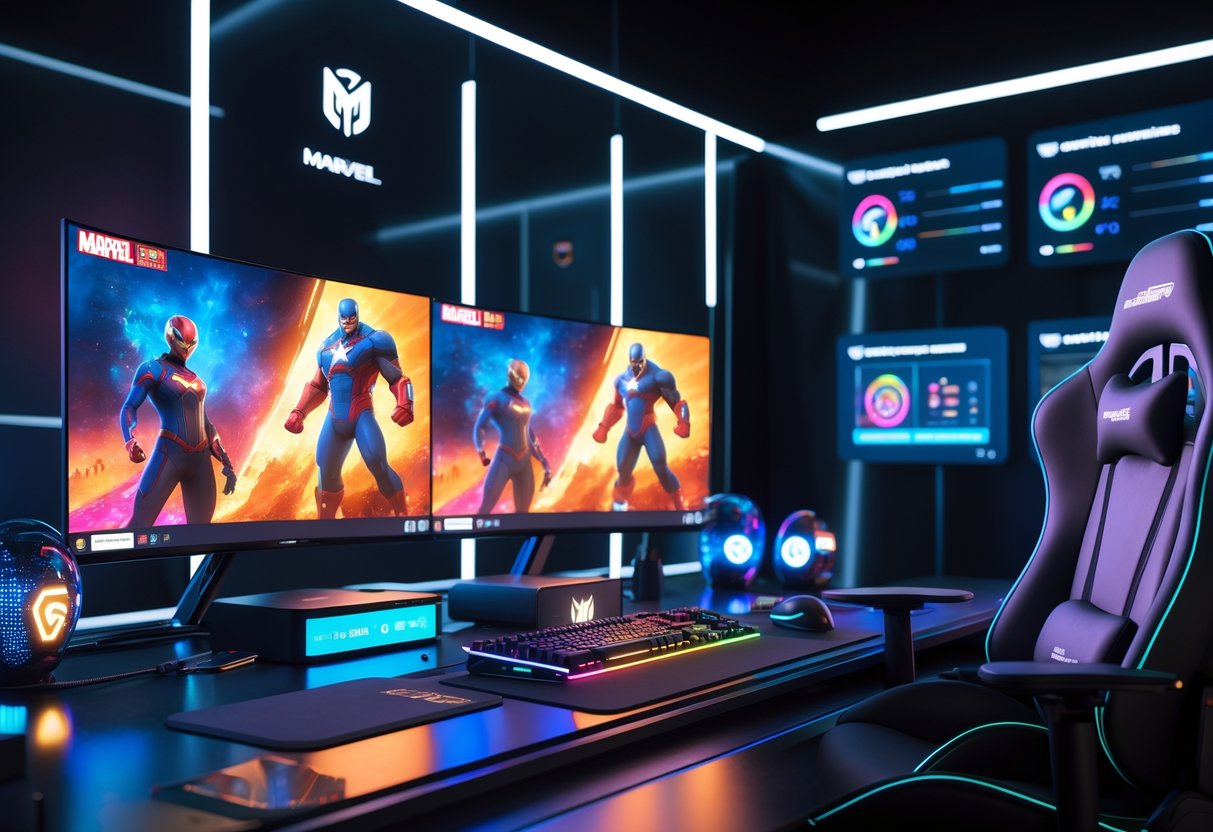
Dialing in your Marvel Rivals graphics detail can honestly be the difference between winning and losing. Let’s focus on what actually matters for competitive play. You want visual clarity and max frame rate.
Texture and Effects Detail
Set Texture Detail to Low. This keeps things sharp enough but doesn’t hog your VRAM.
High textures look nice, but they don’t help you spot enemies. During fights, you won’t even notice the difference.
Effects Detail should also be Low. It controls explosions and flashy moves.
Too many effects just hide enemies and make things messy. Low settings clear up the chaos, especially when everyone pops their ultimates.
You’ll get steadier frames with fewer particles flying around. That’s huge in 6v6 brawls.
| Setting | Recommended Value | Performance Impact |
|---|---|---|
| Texture Detail | Low | High VRAM savings |
| Effects Detail | Low | Reduces visual clutter |
Shadow and Post-Processing
Set Shadow Detail to Medium. Don’t turn it off completely.
Shadows can actually help you—sometimes you’ll spot an enemy’s shadow before you see them. It’s a small performance hit, but worth it.
Drop Post-Processing to Low. This covers things like colour grading and bloom.
Pretty effects might look good for screenshots, but they don’t help you play better. Keep it simple so enemies stand out.
Foliage and Model Quality
Foliage Quality stays at Low. Plants and bushes only help enemies hide.
Low foliage means fewer places for sneaky players to blend in. You’ll see movement more clearly.
Some players try to use high foliage for cover, but low settings take away that trick.
Model Detail should be Low too. It affects how characters look at a distance.
You might notice heroes look a bit blockier, but your frame rate will thank you. In big fights, smooth gameplay matters more than fancy models.
Upscaling and Anti-Aliasing Technologies
Most top players use new upscaling and anti-aliasing tech to boost their frame rates without making the game look like a blurry mess. Getting a handle on DLSS, TSR, and anti-aliasing options helps you find that sweet spot between performance and visual clarity.
DLSS and Nvidia GPU Optimisation
DLSS (Deep Learning Super Sampling) is Nvidia’s main upscaling tech. It lets you run games at lower resolutions, then uses AI to upscale the image. Most pro players with RTX cards turn on DLSS for the big FPS boost.
For Marvel Rivals, DLSS Quality mode usually hits the sweet spot. It runs at 67% of your chosen resolution but still looks sharp.
If you need every last frame, DLSS Performance mode drops to 50% resolution. That’s your best bet if you can’t quite reach your monitor’s refresh rate.
Most pros skip DLSS Ultra Performance. The visuals take a real hit, and it gets harder to spot enemies—definitely not ideal for competitive play.
Frame Generation? Leave it off. Sure, it bumps up FPS, but it adds input lag that just messes with your timing.
TSR and Other Super Resolution Options
TSR (Temporal Super Resolution) steps in when DLSS isn’t available. Marvel Rivals uses this since it’s built into Unreal Engine.
AMD FSR works well for Radeon users. FSR Quality mode usually matches DLSS Quality on most rigs.
Don’t turn on more than one upscaling tech at once. Doing that just creates visual glitches and tanks your performance.
TAAU (Temporal Anti-Aliasing Upsampling) at 100% render scale gives the most stable image. A lot of pros just stick with this for consistency.
| Technology | Best For | Render Scale | Visual Quality |
|---|---|---|---|
| DLSS Quality | RTX GPUs | 67% | Excellent |
| FSR Quality | AMD GPUs | 67% | Very Good |
| TAAU 100% | All GPUs | 100% | Native |
Anti-Aliasing Choices Explained
Anti-aliasing smooths out jagged edges—makes characters and objects easier to see. Picking the right setting helps with spotting enemies and keeps your FPS decent.
TAAU usually gives a clean image with barely any performance hit. Most competitive players just stick with this.
MSAA looks the best, but it eats up a lot of performance. Only use it if your hardware can handle it and you never drop frames.
FXAA barely touches your FPS, but the image gets kind of blurry. Not great if you want to see everything clearly.
Turning off anti-aliasing gives you max FPS, but the jagged edges get distracting. It can make it harder to spot enemies at a distance.
Pro players almost always go for consistent frame rates over maximum graphics. It’s better to keep your FPS steady, especially when things get hectic.
Low Latency and Input Response
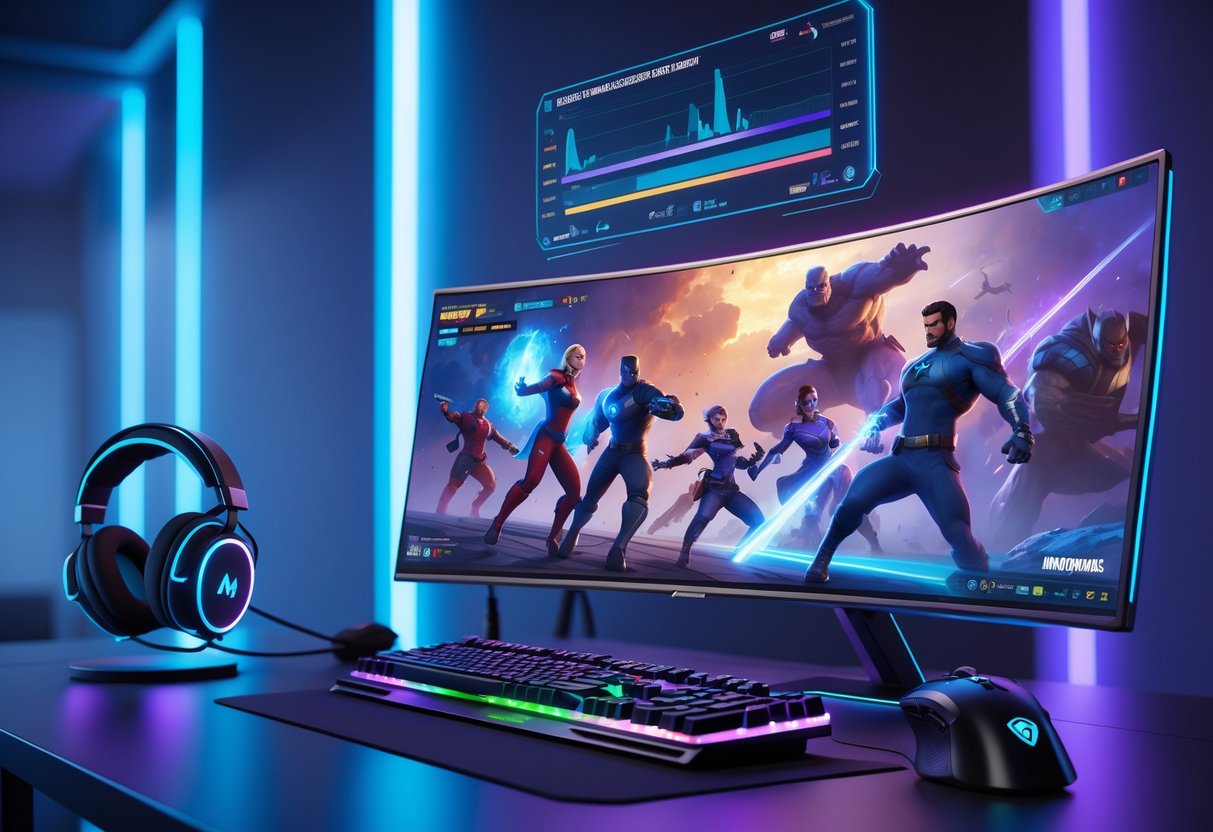
Competitive Marvel Rivals needs snappy responses to enemy moves and sudden action. If you’ve got an Nvidia GPU, you can use low latency mode to cut input lag by 15-20ms. Setting a proper frame cap also helps prevent stutters from GPU overload.
Low Latency Mode
The Nvidia Control Panel gives Marvel Rivals players the best latency reduction. Set Low Latency Mode to “Ultra” on systems that don’t have Nvidia Reflex support in-game.
This setting tells your GPU to prep frames right before your monitor needs them. You’ll notice faster responses during tense moments, like dodging Hawkeye’s ultimate or countering Spider-Man’s swing.
For Marvel Rivals, try this:
- Global setting: Leave it “Off”
- Per-game: Set to “Ultra” for Marvel Rivals
- If you see frame drops: Switch to “On” instead
AMD users can turn on Radeon Anti-Lag in their software. This usually cuts lag by 10-15ms, but results vary depending on your GPU.
VSync and Input Lag
Old-school VSync adds a lot of input delay, but G-Sync or FreeSync with VSync actually helps reduce lag and kills screen tearing.
Turn on G-Sync in the Nvidia Control Panel, then set VSync to “On” globally. This combo gives you smooth gameplay without the big input delay from standard VSync.
Capping your frame rate is more important than most people think. Set your FPS limit to a few frames below your monitor’s refresh rate—like 139-141 on a 144Hz display.
Quick setup:
- Enable G-Sync for both windowed and fullscreen
- Set VSync to “On” in the control panel
- Cap FPS in-game to refresh rate minus 3
- Use Borderless Windowed mode
Frame Generation and Reflex Tools
Nvidia Reflex cuts input lag in Marvel Rivals if you turn it on in the game’s settings. It syncs your GPU and CPU to keep delays low.
Set Reflex Low Latency to “On” in Marvel Rivals graphics settings. Only use “On + Boost” if your FPS drops a lot—it eats more power.
Frame Generation (DLSS 3) adds fake frames between real ones. It looks good on paper, but you get 10-20ms extra latency—not great for competitive play.
Hardware-accelerated GPU scheduling in Windows helps your CPU a bit. Turn it on in Graphics Settings under Variable Refresh Rate. The boost is small, but it’s there if you’re on a high-refresh display.
| Setting | Input Lag Reduction | Performance Cost |
|---|---|---|
| Reflex On | 8-12ms | Minimal |
| Low Latency Ultra | 12-18ms | Low |
| G-Sync + VSync | 5-10ms | None |
| Frame Generation | -15ms (adds lag) | GPU intensive |
Mouse Settings and Sensitivity
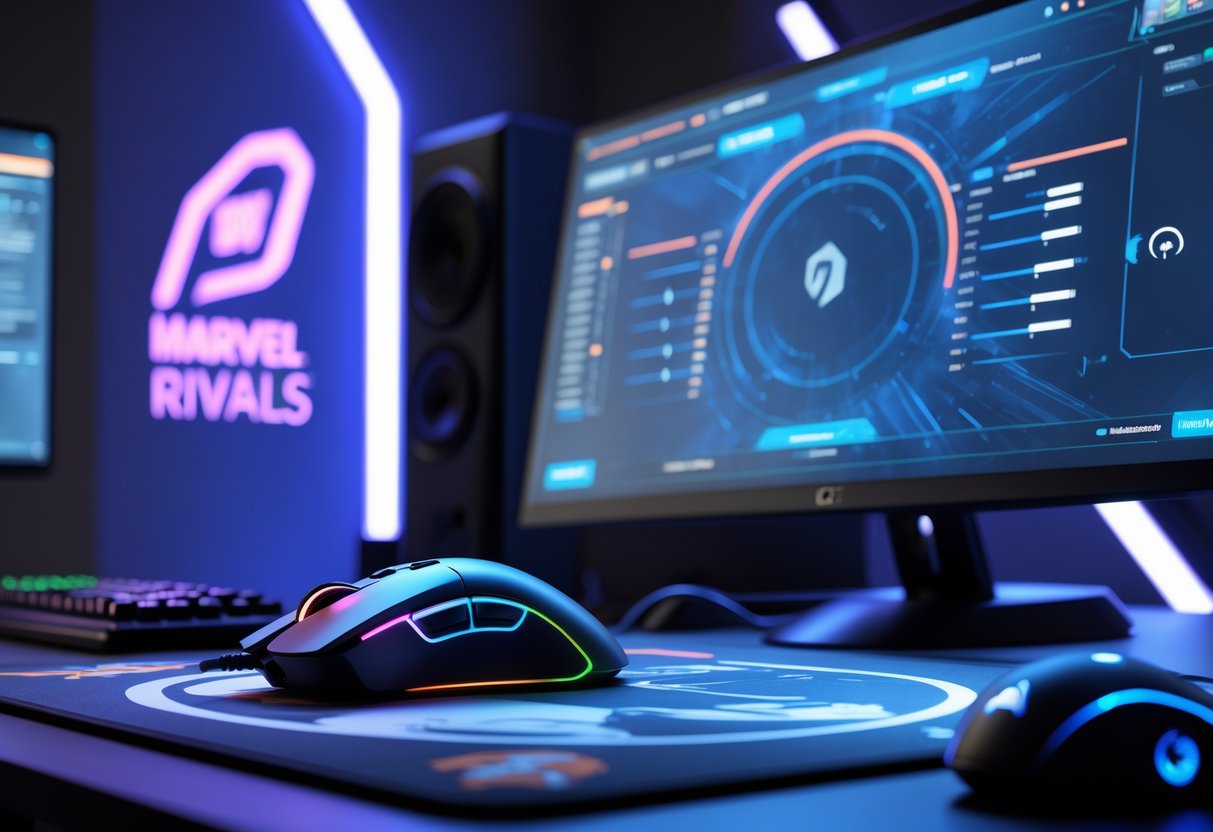
Nailing your mouse settings really does make the difference between clutch shots and embarrassing misses. Most Marvel Rivals pros stick with DPI between 400-1600 and keep in-game sensitivity low for better control.
Optimal Mouse Sensitivity Ranges
Pro players tend to use effective DPI (eDPI) values from 1200 to 4800. You get this number by multiplying your mouse DPI by your in-game sensitivity.
So, if you’re on 800 DPI with 3.0 sensitivity, your eDPI is 2400. That’s usually fast enough to turn quickly, but still steady for aiming.
Low eDPI (1200-2400): Great for hitscan heroes like Hawkeye or Winter Soldier. You’ll need more mouse pad space, but you get better precision for long shots.
Medium eDPI (2400-3600): Works for most heroes—think Iron Man, Star-Lord. It’s a solid balance of speed and accuracy.
High eDPI (3600-4800+): Suits close-range picks like Spider-Man or Venom. You can whip around fast, but you’ll need a steady hand.
Recommended DPI and In-Game Sensitivity
Looking at what pros use, 800 DPI pops up the most. Pair it with sensitivity between 3.0 and 7.0 for solid muscle memory.
Here are some combos from the pros:
| Player | DPI | Sensitivity | eDPI | Hero Focus |
|---|---|---|---|---|
| Crimzo | 1600 | 3.00 | 4800 | Flex |
| nero | 800 | 7.0 | 5600 | DPS |
| heaven | 800 | 6.0 | 4800 | Support |
| cal | 400 | 6.0 | 2400 | Tank |
Try starting with 800 DPI and 4.0 sensitivity (eDPI 3200). Tweak up or down until it feels right for your main heroes.
Mouse Acceleration and Raw Input
Turn off mouse acceleration—seriously, just do it. It messes with your aim by speeding up your cursor based on how fast you move the mouse.
Switch on raw input in Marvel Rivals. This lets your mouse talk straight to the game, skipping any weird Windows settings.
If your mouse supports it, set the polling rate to 1000Hz. That means your mouse updates its position 1000 times a second, which helps cut input lag.
Leave Windows mouse sensitivity at the default (level 6). Changing it can throw off your in-game settings and make your aim feel weird.
Pro Keybinds and Controls
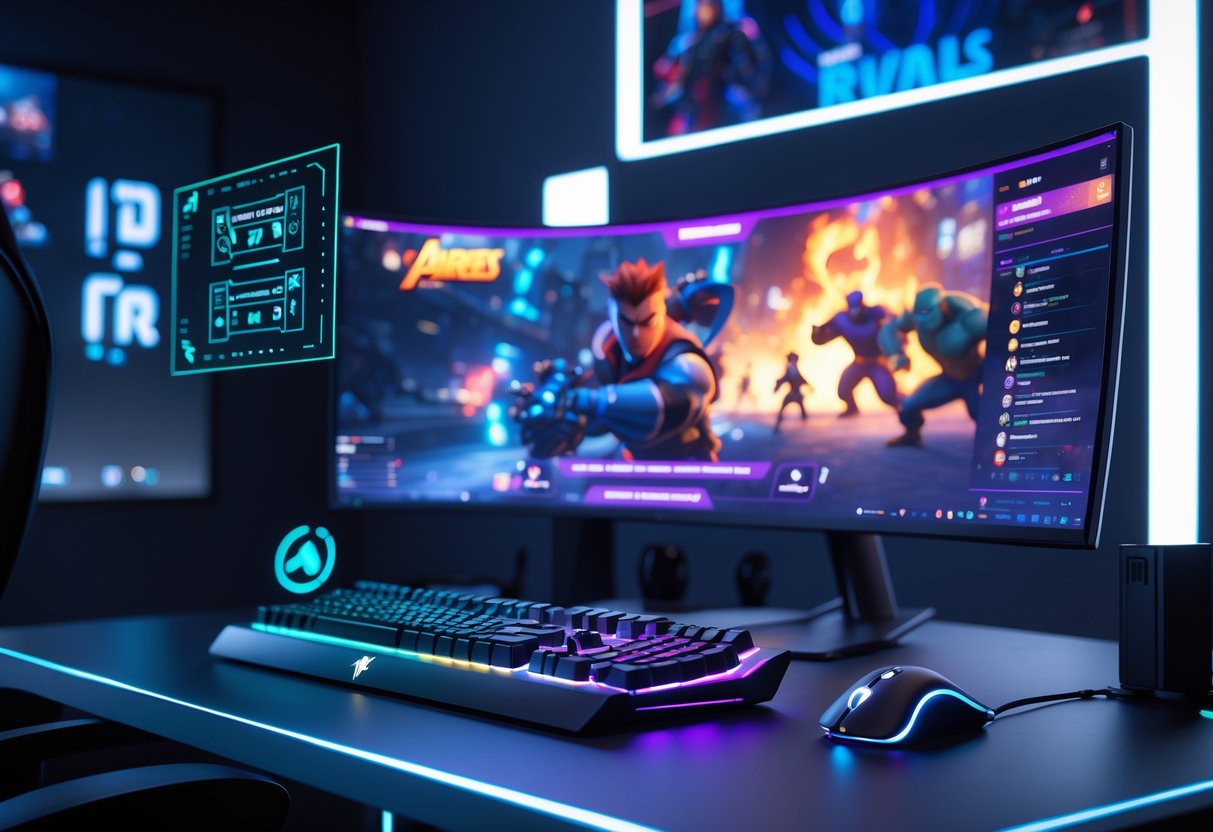
Pro players tweak their keybinds so they can move smoothly and use abilities instantly. Most bind their main abilities to mouse buttons and easy-to-reach keys, making sure they don’t mess up WASD movement.
Optimal Keybinds for Movement
Movement is everything in Marvel Rivals. Stick with WASD as your movement keys—it’s standard for a reason.
If you want a quick upgrade, bind jump to your mouse wheel. This helps with bunny hopping and makes heroes like Spider-Man and Black Panther way more mobile.
Key movement binds:
- W, A, S, D: Move
- Mouse wheel up/down: Jump (spam for mobility)
- Shift: Walk/sprint toggle
- Space: Backup jump
A lot of pros put crouch on Ctrl for fast repositioning. Your pinky can handle it, so your other fingers stay free for movement.
Some advanced players try RDFG instead of WASD. It gives you more nearby keys, but it takes getting used to.
Combat and Weapon Keybind Recommendations
Combat keybinds need to be fast and not mess with your movement. Use side mouse buttons for your two most-used abilities per hero if you can.
Combat binds:
- Left click: Primary fire
- Right click: Secondary fire or aim
- Mouse 4/5: Hero abilities (main ones)
- Q, E: Other abilities
- F: Ultimate
Mouse buttons are great because your aim hand can use abilities while your movement hand stays on WASD. No awkward finger gymnastics.
No side mouse buttons? Try C, V, or X—they’re close to your movement keys, though you’ll have to move your finger briefly.
Keep reload on R—easy to hit with your index finger without leaving movement keys.
Ability and Team-up Bindings
Hero abilities are all over the place, so you’ll want to customise bindings for each hero instead of using one setup for everyone.
Suggested layout:
- Mouse 4/5: Most-used abilities (varies per hero)
- Shift/Ctrl: Secondary abilities (pinky access)
- Tab: Team-up abilities
- G: Melee
Team-up abilities can stay on default since you don’t use them as much. Focus on optimising the abilities you’ll spam in fights.
Hero-specific ideas:
- Spider-Man: Web-swing on mouse wheel, web-shooters on mouse buttons
- Iron Man: Flight mapped to something easy to reach
- Healers: Healing on mouse buttons for quick support
Test your setup in practice range before matches. Every hero feels different, so what works for DPS might be awkward for tanks or supports.
Reflection and Lighting Adjustments

Reflection and lighting quality can tank your frame rates and sometimes block out crucial visual info. Shadows help spot enemies but need careful tuning if you want to keep your performance competitive.
Reflection Quality Options
You should set Reflection Quality to Disabled if you want the best competitive performance. Screen space reflections can really tank your frames, especially during those chaotic team fights.
Reflections show up on water, metallic hero abilities, and some environmental objects. Honestly, these effects almost never give you a real tactical edge in Marvel Rivals.
Most pro players just turn reflections off to keep their frame rates stable—usually above 120 FPS. Disabling reflections usually nets you an extra 10-20 frames per second.
Key reflection settings:
- Reflection Quality: Disabled
- Screen Space Reflections: Off
- Reflective Surfaces: Minimal impact when disabled
Some folks like to keep reflections on Low if their PC can handle it. Try both options in practice matches and see what feels right for you.
Lighting and Shadow Fine-Tuning
Shadow Detail is one setting where you need some balance between performance and gameplay. Set shadows to Medium—don’t just turn them off.
Shadows help you spot enemies peeking around corners or hiding behind cover. If you remove shadows entirely, you’ll probably lose some awareness during matches.
Recommended shadow settings:
- Shadow Detail: Medium
- Global Illumination: SSGI – Low Quality
- Lighting Quality: Low
Medium shadows give you enough info to spot threats without killing your FPS. You’ll keep enemy visibility and still get smooth performance.
Warning: Don’t go for High or Ultra shadow settings in competitive matches. The performance hit just isn’t worth the tiny visual upgrade.
Keep global illumination on Low Quality instead of turning it off. That way, you still get basic lighting and don’t blow your frame rate budget.
Post-Processing and Visual Effects
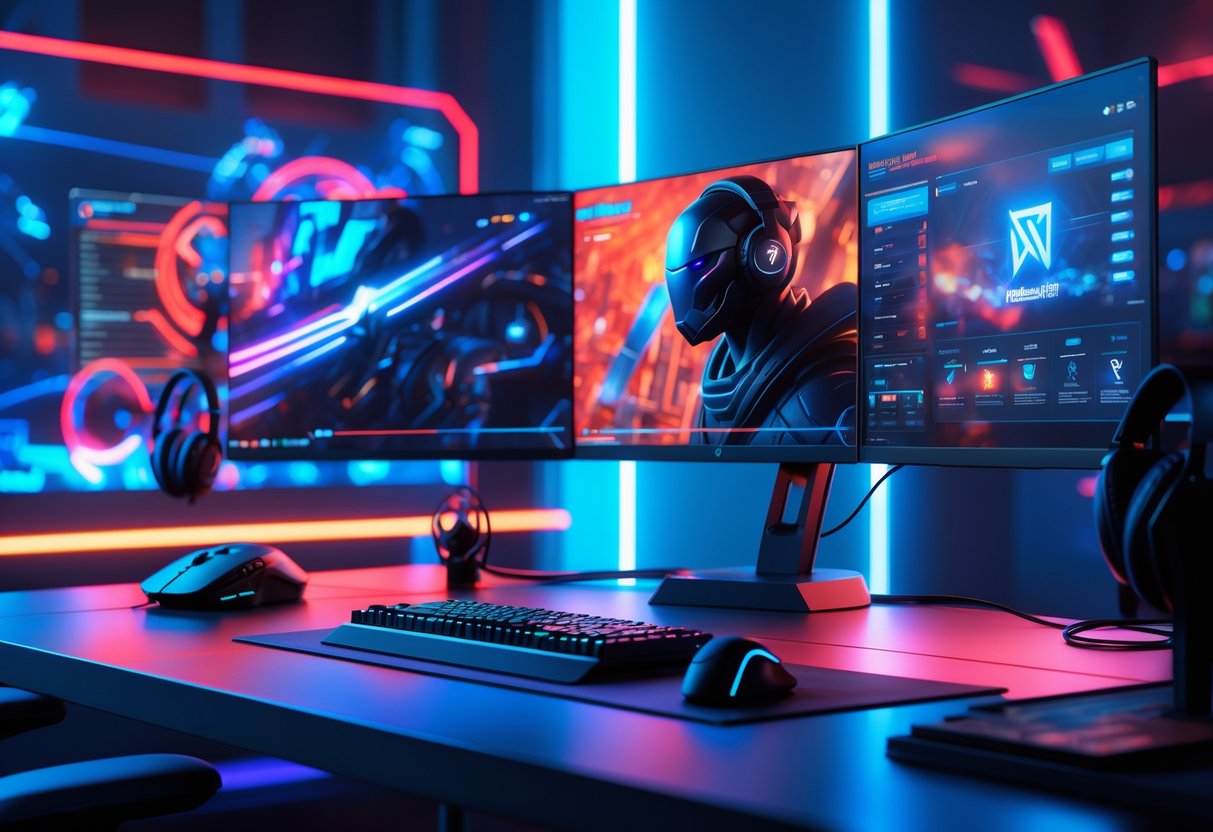
Post-processing settings control late-stage visual effects like motion blur and ambient occlusion. These don’t really impact performance much. Most pros turn them off for max clarity and responsiveness.
Post-Processing Impact on Performance
Post-processing barely affects your frame rate in Marvel Rivals. Turning it on or off usually changes FPS by just 2-3 frames.
This setting covers things like:
- Motion blur
- Ambient occlusion
- Bloom effects
- Lens flare
- Screen-space reflections
Most competitive players just flip post-processing off. Motion blur especially makes it tough to track fast enemies. Bloom can wash out key details you need to see.
Quick win: Disable post-processing first when you’re tuning your settings. You’ll get crisper visuals and maybe a hair more performance.
Shadow quality, on the other hand, has a much bigger impact. High shadow settings can drop your average FPS by up to 20%.
Balancing Visuals with Responsiveness
Pro players always pick clarity over fancy visuals when setting up Marvel Rivals. Try using the same settings as players like TenZ and shroud.
For competitive play, turn off:
- Motion blur (harder to track enemies)
- Depth of field (blurs backgrounds)
- Bloom effects (can hide enemy outlines)
If you like your game looking a bit nicer, keep these on:
- Anti-aliasing (smooths out jagged lines)
- Ambient occlusion (adds some realistic shadowing)
Warning: Some visual effects can hide stuff you really need to see, like enemy abilities or ult indicators. Heavy post-processing makes these less visible.
Test different combos in training mode. See how motion blur changes your tracking. Most people think the game just looks cleaner with minimal post-processing.
Most pros use 1920×1080 resolution and keep post-processing disabled for the best competitive advantage.
Texture, Detail, and Model Settings
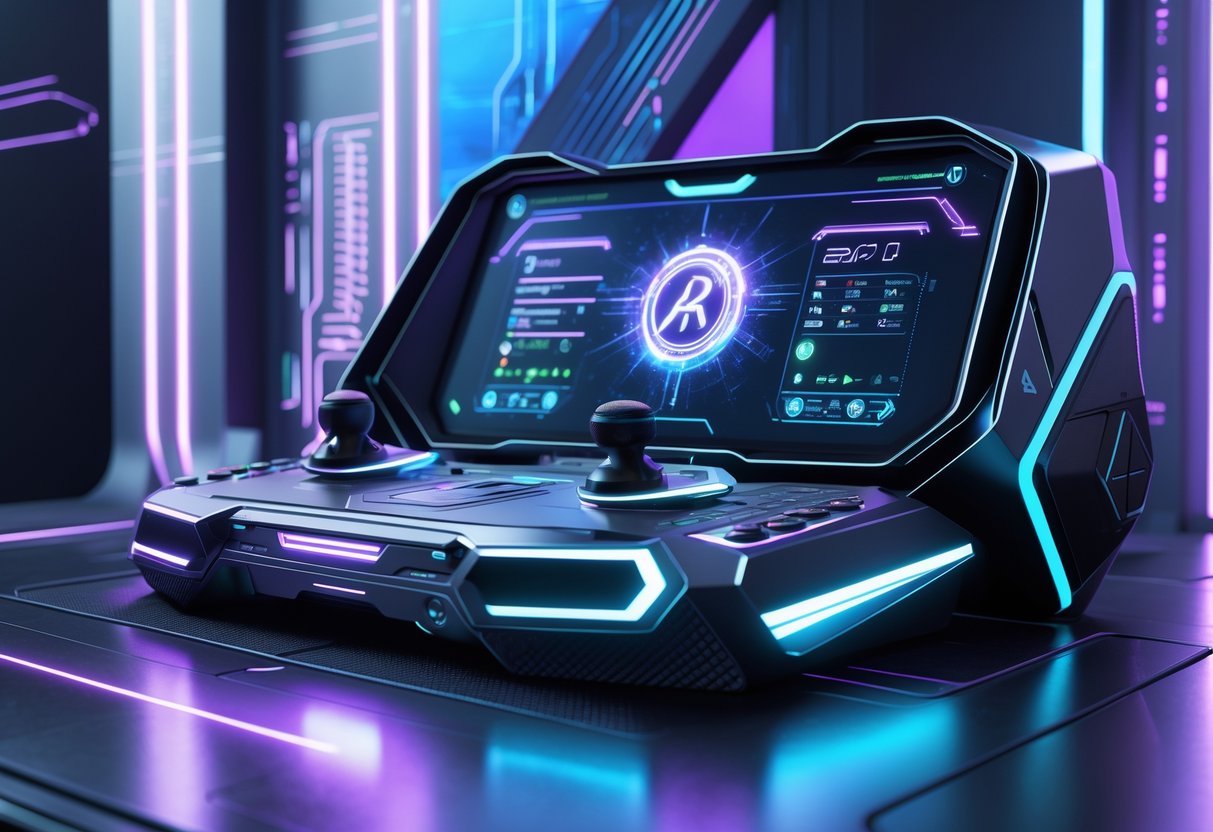
Dialing in your texture and model settings can really boost frame rates. Lowering texture detail and model quality improves performance, while medium shadows help you spot enemies.
Adjusting Texture Detail
Set Texture Detail to Low for the best performance gains. This setting eats up your graphics card’s memory the most.
Low texture detail makes surfaces and walls look less sharp. But you’ll still see enemies just fine.
Pro players usually go for low texture detail because smooth gameplay trumps pretty graphics. You can get 15-20% better frame rates with this tweak.
If you’ve got a beefy graphics card, try medium texture detail. Test it out and see if your FPS stays above 144.
Quick tip: Only change texture detail between matches. The setting needs a second to load in.
Model and Foliage Quality
Set Model Detail to Low and Foliage Quality to Low for the best performance. These control how fancy character models and plants look.
Low model detail makes characters less detailed up close, but you’ll still see all the info you need for gameplay.
Foliage quality affects grass, trees, and plants on outdoor maps. Low settings cut out extra bushes and leaves that might block your view.
A lot of competitive players stick with low foliage. Less clutter means you see enemies more clearly and track targets easily.
You’ll often get 10-15 extra FPS with these settings. That’s the difference between a buttery 144 FPS and stuttering.
Frequently Asked Questions

Pro players use all kinds of sensitivity settings, anywhere from 0.64 up to 9, but most stick between 800-1600 DPI. The best settings balance personal preference with optimised graphics and system tweaks.
What sensitivity settings do top Marvel Rivals players recommend?
Most pros use DPI between 800-1600. For example, Crimzo runs 1600 DPI with 3.00 sensitivity, while delenaa prefers 1600 DPI with just 0.64 sensitivity.
Find what feels right for your playstyle. Higher DPI usually means you’ll want lower in-game sensitivity for better precision.
Popular combos are 800 DPI with 6-7 sensitivity, or 1600 DPI with 2.5-3. Try a few options in practice mode before you jump into ranked.
Can you suggest the best graphics settings for a competitive edge in Marvel Rivals?
Turn off or lower visual effects that aren’t useful for gameplay. Shadows on low or medium help you see enemies without needing max quality.
Disable motion blur and depth of field. They look cool but can hide important details during fights.
Keep texture quality at medium or high if your PC can handle it. You want character models clear enough to ID targets.
Set your field of view as high as you’re comfortable with. Wider FOV means better peripheral vision in team fights.
What are the preferred settings for professional Marvel Rivals players using on PC?
Pro players always chase high frame rates over visuals. Most aim for solid 144+ FPS with low input lag.
Mouse settings vary, but 1000Hz polling rate is the norm. They use gaming mice like the Logitech G PRO X SUPERLIGHT or similar.
Windows sensitivity usually sits at 6, with enhanced pointer precision off. That way, mouse movement stays consistent everywhere.
For audio, pros focus on directional sound. Most use dedicated headphones or earbuds for better positional cues.
Which Marvel Rivals pro players should I be following for gameplay strategies?
Follow players from big esports orgs like ENVY, Sentinels, and 100 Thieves. These teams bring a ton of experience.
Players like Crimzo from Sentinels and ENVY’s roster (cal, Coluge, nero, Shpeediry) stream often and share tips. Watching them helps you learn about positioning and team coordination.
Stick with players who main your favorite heroes. Each role needs its own tweaks to settings and strategy.
How do I configure my Marvel Rivals settings for optimal performance?
Start with graphics on low or medium. Bump them up slowly until you keep stable FPS above your monitor’s refresh rate.
Turn off effects like motion blur, depth of field, and heavy particles first. These hurt performance but don’t help you win.
Keep render scale at 100% unless you’re desperate for frames. Lowering it makes enemies harder to spot.
Update your graphics drivers and close background apps before you play. Freeing up resources always helps.
What team compositions are commonly used by Marvel Rivals pros in tournaments?
Pro teams usually go for balanced lineups with clear roles. You’ll see two damage dealers, two supports, and then two tanks or vanguards most of the time.
They really lean into character synergy. Teams like to build around ultimate combos that can swing a team fight fast.
The meta? It shifts all the time with new patches and updates. Honestly, if you want the latest strategies, keep an eye on tournament streams or check out what the pros are posting on social media.
Flexibility is huge—top teams switch up their comps depending on the map or who they’re facing. Adapt or get left behind, right?

